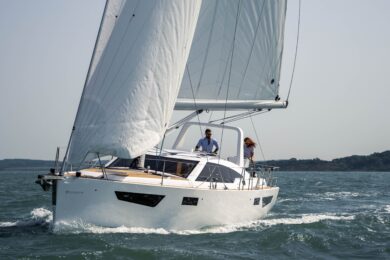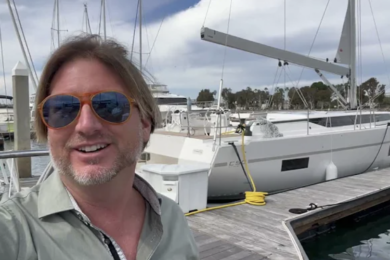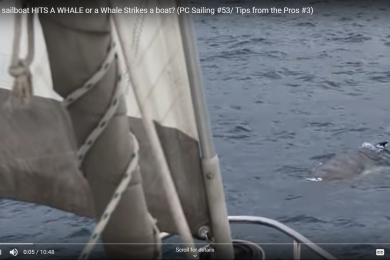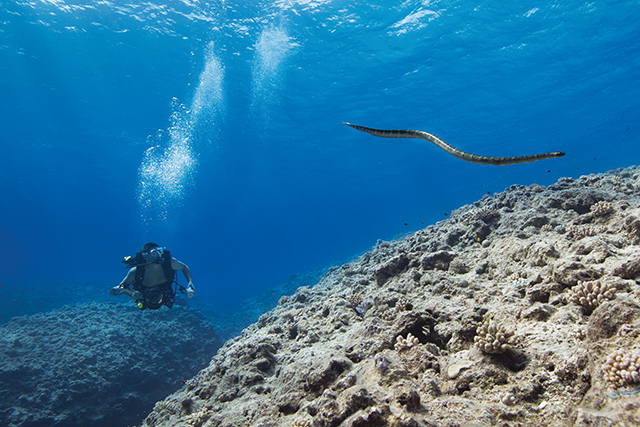Experiencing a unique and pleasant isle along the Coconut Milk Run (published March 2014)
For all his discoveries, Captain James Cook did register a few misses. The great navigator sailed right past Sydney Harbor, for one thing, and failed to notice New Zealand’s gorgeous Milford Sound. In the grand scheme of his three epic voyages, these oversights can be excused, but we can’t quite forgive his dismissal of little Niue, a speck in the Pacific he called Savage Island. After a brief encounter with stone-throwing natives, Cook made a quick exit and curtly noted in his log: “Seeing no good was to be got of these people or at the isle we return’d on board…and made sail to WSW.” Admittedly, a lot has changed since 1774, but we humbly beg to differ.
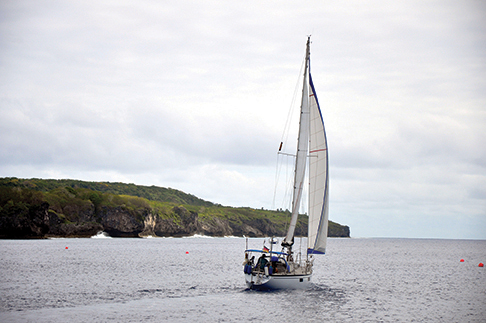
Today’s Niue is a delightfully welcoming place, a unique stepping-stone along the South Pacific Coconut Milk Run. Nowhere else in Polynesia did we find such unbelievably clear water, a similar landscape, or as warm an association with the letters NYC—that’s Niue Yacht Club, for the record, not New York City. Locals include visitors in community events, whales let you snorkel alongside, and yes, even the poisonous sea snakes are friendly.
GETTING THERE
Sadly, many sailors bypass the little island. Those traveling via the northern Cook Islands often head to Tonga non-stop rather than facing winds and seas from forward of the beam. Happy winners of the South Pacific weather lottery, we snagged a perfect window of ESE winds for a brisk four-day, 560-mile beam reach from Suwarrow. Wind direction is less of an issue for cruisers who arrive via the southern Cook Islands, although that route often brings capricious winds—calm today, blasting tomorrow—a result of greater proximity to low pressure systems tracking to the far south.
Few Pacific landfalls are as laughably simple as arrival in Niue. Except for a few FADs (Fish Aggregating Devices marked by large orange buoys), the island is free of any off-lying dangers. It’s a straightforward matter of pulling into the deep, wide bay of Alofi and picking up one of NYC’s 20 hefty moorings. Curious sea snakes popped their heads up as we made fast to one of the many free moorings and took in our new surroundings. We were reassured to learn that the fangs of these venomous reptiles are located so far back in their narrow throats that it is virtually impossible to get bitten. Yes, cruising is a great learning experience, and on our way across the vast Pacific, we shed one paranoia after another: first our fear of sharks, and now, our instinctive aversion to sea snakes.
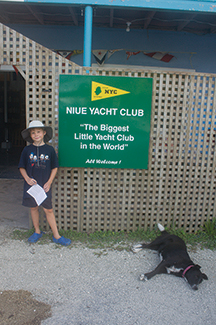
Having triumphantly announced our arrival to Radio Niue and conquered the notorious dinghy crane (more on that later), we were greeted with a friendly “Welcome to Niue!” by customs officials on the wharf. Soon, we were walking south past Alofi’s “commercial center”—a sprawling, one story building subdivided into small shops—to Niue Yacht Club, “the biggest little yacht club in the world.” Run entirely as a volunteer effort by good-hearted people such as Ira Merrifield and Commodore Keith Vial, NYC offers boaters warm showers, a cozy reading corner, free Internet, power outlets, and a small bar area open six days a week. They even hosted our son’s ninth birthday party in the clubhouse, going so far as to decorate a table with balloons and colorful tablecloth for the special occasion. For an optional NZ$20, we couldn’t resist the impulse to join NYC, whose membership exceeds the island’s population of 1,500. Thanks to Ira at NYC and the extremely helpful tourist office just a coconut’s throw away, we soon had all the information needed to explore the “Rock of Polynesia.”
UNDER THE SEA
The uplifted coral island resembles a Pacific atoll that has been hoisted high and dry 100 feet above sea level. One of Niue’s principal drawing cards is its fascinating underwater world, where visibility seems limitless. Checking the mooring is a question of glancing from your deck through crystal-clear water, even to 100-foot depths. Niue’s pitted coral bulk extends underwater in a series of slopes and deeply etched gullies, making for snorkel and dive experiences like nowhere else. SCUBA divers can explore underwater caves where the sea glows with shafts of intense blue light or ascend an enclosed underwater “chimney” from depths of 20 to 60 feet. The friendly folks at Niue Dive run guided trips to various locations and fill bottles for cruisers with their own gear.
It’s not just the ringed sea snakes that make Niue’s sea life interesting. Whales are frequent visitors during the July to October calving season, as are dolphins. At the call of a whale sighting near the mooring field, I geared up in record time to snorkel beside an adult humpback. Observing the magnificent creature splash its black body and white fins on the surface was a humbling experience, topped only when the whale dove effortlessly out of view into its private realm far, far below. At times, it’s even possible to hear humpback songs resonating through the water and into the cozy quarters of your own hull. On rare occasions, the cetaceans get closer, closer—too close! In 2012, a passing whale entangled itself in a mooring line, seriously damaging one sailboat’s bow roller in its efforts to pull free. In true community fashion, locals and boaters pitched in with materials and expertise to patch the vessel so that it could safely continue to Australia. That said, this was an unprecedented and hopefully one-of-kind encounter for both sailors and whales.
SHORESIDE
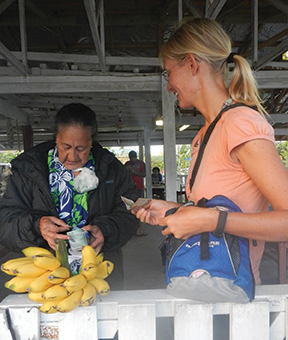
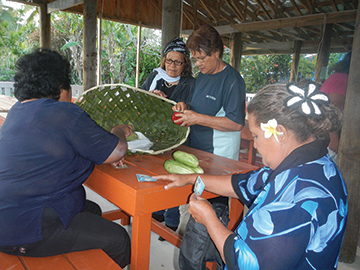
When we weren’t in the water, we wandered bucolic Alofi nibbling sweet coconut bread fresh from the bakery, finding a handful of cafes, a supermarket and two gas stations. Something struck us as unusual in the bank: the absence of bars at the cash counters. Obviously armed robbery is not an issue in the friendly island nation! Foreign tourism to Niue is low-key, with a single weekly flight from Auckland that carries a mere 160 passengers. They quickly disappear into a handful of inconspicuous hotels or into the homes of relatives. In fact, more Niueans live abroad than on the island itself. Many islanders have immigrated to New Zealand in recent decades, most recently after Cyclone Heta struck in 2004. Indeed, a drive around the island revealed many abandoned dwellings sitting cheek by jowl with their tidy neighbors. Still, the population is upbeat and the living standard quite high (thanks to support from New Zealand) despite the island’s isolation and status as one of the smallest sovereign nations in the world.
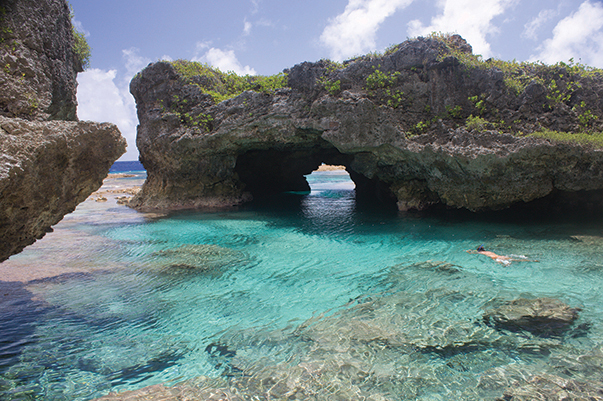
Tourist infrastructure is unobtrusive but well conceived, like the many well-signed “sea tracks,” coastal walks that range from five to 20 minutes. Visitors are pampered with amenities such as clean toilets and fresh water showers at nearly every trailhead. Together, the sea tracks offer a feast for the senses: the rich, musky smell of old growth forest at Huvalu Forest Conservation Area; the roar and hiss of waves smashing into rock pinnacles at windward Togo Chasm; the dark, damp echoes of Avaiki Cave; and the sensation of a powerful sea surge trying to flush swimmers out of narrow Matapa Chasm and into the open sea. Topping the list of island superlatives are the magical Limu Pools; sparkling aquamarine basins where snorkelers can swim through the shade of a small sea arch. Fresh and salt water mingle here, creating blurry strands for a psychedelic underwater effect. We took in all these sights along the island’s 40-mile circumference by rental car, splitting the NZ$100 daily rate of an eight passenger van among three crews. To drive on the island, visitors are required to apply for a local driver’s license at the police department, a ten minute process that costs NZ$22. Like our NYC membership, we considered the colorful photo ID another trophy of our memorable stay on Niue.
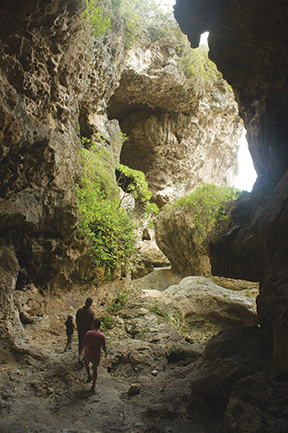
UNIQUE NIUE
Niue is a nation of early risers, so we dragged ourselves ashore at o’dark-thirty for the Tuesday produce market, optimistically anticipating fresh, vitamin-rich goodies. Sadly, this was the one disappointment Niue was to deliver. Savvy buyers snapped up the pitifully small quantities of produce before they even hit the sales tables by intercepting vendors in the parking area. Being a quick study, I copied the maneuver with the next arrival. After “window shopping” through the windshield, I helped myself to bananas right out of the hatch and proceeded to make change among three eager buyers for one quick transaction with the vendor—all before she had “finally” emerged from behind the steering wheel. Eventually, we discovered that the true key to successful produce procurement on Niue is simply smiling. Several times during our stay, friendly residents gave us bananas and paw paws (papayas) growing on their properties. One woman even made a special trip to the wharf to present the yachties with bunches of deliciously sweet bananas. Welcome to Niue, indeed.
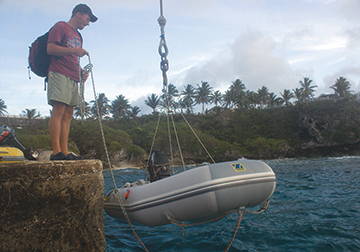
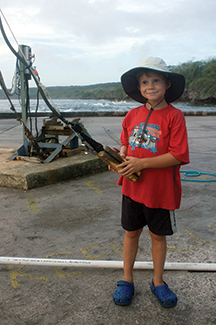
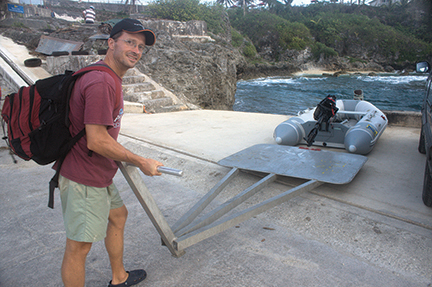
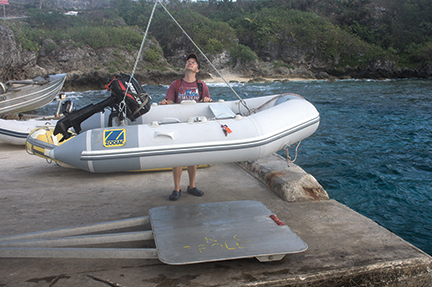
Ah, the town wharf, with its infamous dinghy crane. Since the towering dock is exposed to the pulsing swell, small craft cannot safely remain tied up in the water. The solution is an ingenious crane that lifts everything from small dinghies to heavy fishing skiffs out of the water. We quickly discovered that much like the poisonous sea snakes, the dinghy crane is all bark but no bite. You simply approach from the water, attach your dinghy’s three-point harness to an over-sized hook, and step ashore. Then it’s a simple matter of pressing the “up” button on the electronic control box, swinging the craft ashore, and rolling it out of the way on a hand trolley that is considerately provided by the NYC. Using the crane is a smooth and easy operation, unless of course the swell gets up, when the lift can get “interesting,” “challenging,” or downright “unusable,” in the words of Commodore Keith.
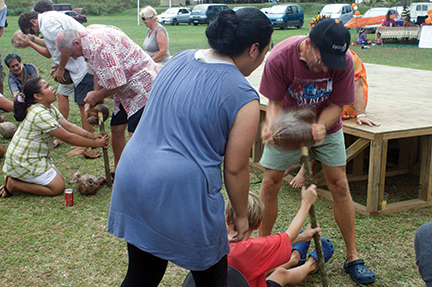
We ended our stay on Niue at a “village show,” a monthly event hosted in turn by each of the island’s communities. In addition to handicraft exhibits and dance presentations, the program included events like an uga contest, in which bowling ball-sized coconut crabs tipped the scales. In the show’s finale, the handful of foreign visitors were called up for a special contest: speed coconut husking. We immediately observed that “speed” is a relative term when sailors take on coconuts. As we hacked, thumped, tore and swore at our stubborn coconuts, locals erupted in laughter at our pitiful techniques: the over-the-head, slam-it-down with all your might approach; the pound-and-grind in close quarters approach; and the even less effective chip-chip-chip from the wrist technique. Unable to watch such ineptitude any longer, local women leaned in with pointers until one slightly more coordinated sailor conquered two coconuts in two minutes. Then, the locals rolled up their sleeves and demonstrated how it was done properly in a mere 20 or 30 seconds—men’s “warrior” and women’s divisions, respectively. We all enjoyed the fun and laughter, feeling a touch of kinship with the islanders who had so kindly included us in their community get-together.
We had to ask ourselves, could we find one negative thing to report about Niue? By nature, the island is a destination rather than a cruising ground as you sail to the single port and then explore ashore. The main drawback for sailors is that Alofi’s bay is scarcely more than a light indentation in the western coastline, so it’s important to track weather developments at all times. The NYC moorings are exceptionally strong and well maintained, not to mention reasonably priced at NZ$15 per night, but a fair amount of rocking and rolling is to be expected. Strong, sustained west winds or a southerly swell can even drive yachts away entirely. That said, most sailors find the usual motion tolerable and depart the Rock of Polynesia with fair memories.
Pushed by the approaching cyclone season and pulled by our next destination, we eventually admitted that it was time to drag ourselves away from yet another “most favorite” island. To paraphrase Captain Cook’s comments, I’ll state for the record: “Knowing much good was to be got of these kind people and at the lovely isle, we return’d on board…and with heavy hearts, made sail to the west.”
Nadine Slavinski is the author of the book Lesson Plans Ahoy: Hands-On Learning for Sailing Children and Home Schooling Sailors. Currently on sabbatical from teaching, she cruises aboard her 35-foot sloop, Namani, with her husband and young son. After a season in the southwest Pacific, Namani is cruising eastern Australia. Slavinski’s websites, www.nslavinski.com and www.sailkidsed.net, list free resources for home schooling sailors.
NIUE FACTS
Language: Niuean and English
Currency: NZ$ (available only as cash for cash exchange or Visa card cash advance at the bank).
Customs: No cruising permit or entry fees (weekend fee NZ$20); departure tax of NZ$34 per person.
Niue Yacht Club: http://nyc.nu/wp/
Visitor’s Information: www.niueisland.com

